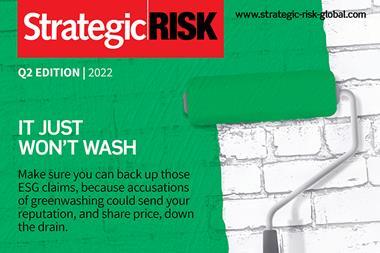There are massive upfront costs in getting your organisation ESG-ready. So who pays?
Navigating the raft of ESG requirements and metrics, coping with the cost of disclosure and adaptation and figuring out what issues are material to your organisation are just some of the challenges concerning risk managers right now.
This was according to a panel of experts speaking at a seminar on Day Two of the Airmic 2022 Conference in Liverpool.
The panellists agreed that risk managers have a crucial role to play as their companies set out on their ESG journeys, describing it as an ‘open goal’, but wondered how they would find the bandwidth given they are already so stretched in their day-to-day goals.
‘Soup’ of ESG metrics
Matthew McEwan, director and risk manager at Coca-Cola Europacific Partners pointed out that there are over 90 ESG ratings, each weighting metrics differently.
There is also the task of preparing for present and looming regulatory and reporting frameworks, including TCFD, which come with a considerable cost of disclosure.
Roger Jackson, partner at KPMG, recommended trying to get an understanding of the different ratings but also collecting data and metrics to product your own score and to get that message out.
“For the rating agencies, there are between 600 and 1,000 ESG metrics,” he said. “It’s a soup of metrics. At one level we need more standardisation of the basic components and at the other level, it must be nuanced towards the firm’s priorities.”
It comes down to materiality assessments, explained Emma Arnold, director at Control Risks. ”What issues are material to your business and how do you gear up to tackle these issues?” she asked. ”It’s a cyclical thing - you don’t just do it once and move on.”
Putting a number on it
Another challenge is how to value an organisation’s investments in ESG. While there is inevitably a lot of assumptions and uncertainty involved, it is important to start thinking about value generation as this can make the ESG a lot more tangible for the board and C-suite to understand, thought Jackson.
However, there is a big fear factor when it comes to putting out ESG numbers, thought McEwan. Corporates are looking at the tide of greenwashing litigation coming down the line and feeling uncomfortable about issuing non-financial information.
“There is a need for the audit committee to get involved,” he said. “Particularly the comfort level of the Big Four.”
“[Disclosure] is the direction of travel but there is a big fear factors associated with disclosure of financial numbers that are on a range.”
It is extremely challenging to measure the value of natural assets, pointed out Keith Scott, business performance manager at Northern Ireland Water (NIW). He pointed to work the utility company is doing with the RSPB to preserve peatlands, which are difficult to value despite being so important.
“How do you measure social and natural capital,” he said. “How do you put a number on preserving peatlands? There’s a big gap at the moment – no guidance there and that’s a big risk.”
Show me the money
Panellists acknowledged there was a massive upfront cost in meeting ESG responsibilities, particularly where climate and sustainability are concerned.
Who pays for it all is a major challenge. Scott said it was likely that some of the investments in generating longer-term sustainability would inevitably be borne by taxpayers and consumers.
“We know we need to do this, but it requires hard cash and the company’s upfront costs need to be recovered and paid for by someone. Everyone likes climate and ESG but nobody wants to pay for it.”
Transitioning to zero carbon is where some of the biggest costs are being borne. Scott pointed out that 50-80% of the company’s carbon footprint is in its supply chain, particularly when it comes to construction. Cement is a massive offender and NIW is currently looking at offsetting that exposure through investments in biodiversity.
But there are beneficial synergies to be found where the necessary investments are made. NIW is carrying out some pilot projects to consider some of the commercial benefits that can be found through more sustainable approaches, such as freeing green hydrogen from waste water to be used within the energy sector.
“If properly funded by government or shareholders, these efforts have a nice ripple effect,” he said.
Arnold pointed out that new regulation – such as TNFD - will require companies to value and report on the impact their organisations on the natural world. This should go some way to gaining more consistency and certainty in how to value nature-based assets.
“You can’t adapt the business if you don’t know what your risks are,” she said.
Airmic 2022: Preparing for the worst
- 1
- 2
- 3
- 4
- 5
 Currently reading
Currently readingAirmic 2022: Who pays for ESG?
- 6
- 7
- 8
- 9
- 10





























No comments yet